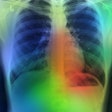A deep-learning algorithm can detect and segment cerebral aneurysms on CT angiography (CTA) exams with a high degree of accuracy, according to research published August 20 in Radiology.
A team of researchers led by Jianyong Wei of Shanghai Sixth People’s Hospital in China trained a deep-learning algorithm using CTA exams gathered from multiple hospitals and discovered in a retrospective analysis that their algorithm yielded comparable results to the original radiology report findings. What’s more, the model performed consistently on images generated by different scanner manufacturers.
“All these findings support that the [deep-learning] model could serve as a good screening tool for cerebral aneurysms,” the authors wrote.
Digital subtraction angiography (DSA) is the current reference standard for detection of cerebral aneurysms, but the modality is invasive and is not used for screening, Wei and colleagues explained.
“... CTA is usually the first-line exam for aneurysm identification, and its role in clinical diagnosis is to detect cerebral aneurysms and generate three-dimensional segmentation,” they wrote. “However, cerebral aneurysm identification on CTA images is time-consuming and error-prone, particularly for less-experienced clinicians, due to the diminutive size and faint contrast of the aneurysm against cerebral vessels. Thus, accurate cerebral aneurysm identification on CTA scans remains challenging and could be improved by automated software solutions.”
As a result, the research group sought to develop a deep-learning algorithm for cerebral aneurysm segmentation and detection using 6,288 retrospective head/neck CTA exams performed for suspected cerebrovascular disease at eight hospitals between February 2022 and February 2023. They then tested the algorithm on an internal dataset of 632 patients and an external test set of 1,214 patients from one of the eight facilities.
The model took an average of 1.76 minutes to perform vascular reconstruction, segmentation, and detection.
![Original axial CT angiography (CTA) section, vessel, and cerebral aneurysm (CA) segmentation of the AI model (AI-Seg), volume rendering derived from the AI-segmented results (AI-VR), and digital subtraction angiography (DSA) images verified at various locations and sizes for cerebral aneurysm diagnosis. CTA images were acquired in the transverse plane, with the contrast agent (comprising 60 mL of iohexol [350 mg of iodine per milliliter] and 40 mL of normal saline at an injection rate of 5 mL/sec) administered using the smart tracking method. (A) In a 66-year-old male patient, the cerebral aneurysm was diagnosed by the deep-learning (DL) model in the right internal carotid artery segment C7 (R-ICA-C7) (boxes and red label), with verification at DSA (arrow), and the short and long diameter description was “3.2 × 5.1 mm.” (B) In a 68-year-old male patient, the cerebral aneurysm was diagnosed by the DL model in the right anterior cerebral artery segment A2 (R-ACA-A2), with verification at DSA, and the short and long diameter description was “3.3 × 6.5 mm.” (C) In a 57-year-old female patient, the cerebral aneurysm was diagnosed by the DL model in the right middle cerebral artery M2 bifurcation (R-MCA-M2), with verification at DSA, and the short and long diameter description was “3 × 3 mm.” (D) In a 65-year-old female patient, the cerebral aneurysm was diagnosed by the DL model in the left posterior cerebral artery segment P1 (L-PCA-P1), with verification at DSA, and the short and long diameter description was “4.5 × 7.1 mm.” Images and caption courtesy of Radiology.](https://img.auntminnie.com/files/base/smg/all/image/2024/08/images_large_radiol.233197.fig5.66c4ef6817da8.png?auto=format%2Ccompress&fit=max&q=70&w=400) Original axial CT angiography (CTA) section, vessel, and cerebral aneurysm (CA) segmentation of the AI model (AI-Seg), volume rendering derived from the AI-segmented results (AI-VR), and digital subtraction angiography (DSA) images verified at various locations and sizes for cerebral aneurysm diagnosis. CTA images were acquired in the transverse plane, with the contrast agent (comprising 60 mL of iohexol [350 mg of iodine per milliliter] and 40 mL of normal saline at an injection rate of 5 mL/sec) administered using the smart tracking method. (A) In a 66-year-old male patient, the cerebral aneurysm was diagnosed by the deep-learning (DL) model in the right internal carotid artery segment C7 (R-ICA-C7) (boxes and red label), with verification at DSA (arrow), and the short and long diameter description was “3.2 × 5.1 mm.” (B) In a 68-year-old male patient, the cerebral aneurysm was diagnosed by the DL model in the right anterior cerebral artery segment A2 (R-ACA-A2), with verification at DSA, and the short and long diameter description was “3.3 × 6.5 mm.” (C) In a 57-year-old female patient, the cerebral aneurysm was diagnosed by the DL model in the right middle cerebral artery M2 bifurcation (R-MCA-M2), with verification at DSA, and the short and long diameter description was “3 × 3 mm.” (D) In a 65-year-old female patient, the cerebral aneurysm was diagnosed by the DL model in the left posterior cerebral artery segment P1 (L-PCA-P1), with verification at DSA, and the short and long diameter description was “4.5 × 7.1 mm.” Images and caption courtesy of Radiology.
Original axial CT angiography (CTA) section, vessel, and cerebral aneurysm (CA) segmentation of the AI model (AI-Seg), volume rendering derived from the AI-segmented results (AI-VR), and digital subtraction angiography (DSA) images verified at various locations and sizes for cerebral aneurysm diagnosis. CTA images were acquired in the transverse plane, with the contrast agent (comprising 60 mL of iohexol [350 mg of iodine per milliliter] and 40 mL of normal saline at an injection rate of 5 mL/sec) administered using the smart tracking method. (A) In a 66-year-old male patient, the cerebral aneurysm was diagnosed by the deep-learning (DL) model in the right internal carotid artery segment C7 (R-ICA-C7) (boxes and red label), with verification at DSA (arrow), and the short and long diameter description was “3.2 × 5.1 mm.” (B) In a 68-year-old male patient, the cerebral aneurysm was diagnosed by the DL model in the right anterior cerebral artery segment A2 (R-ACA-A2), with verification at DSA, and the short and long diameter description was “3.3 × 6.5 mm.” (C) In a 57-year-old female patient, the cerebral aneurysm was diagnosed by the DL model in the right middle cerebral artery M2 bifurcation (R-MCA-M2), with verification at DSA, and the short and long diameter description was “3 × 3 mm.” (D) In a 65-year-old female patient, the cerebral aneurysm was diagnosed by the DL model in the left posterior cerebral artery segment P1 (L-PCA-P1), with verification at DSA, and the short and long diameter description was “4.5 × 7.1 mm.” Images and caption courtesy of Radiology.
In testing on the internal dataset, the model yielded a vessel lumen segmentation Dice similarity coefficient (DSC) of 0.96 and a cerebral aneurysm segmentation DSC of 0.87. In 112 patients of the external dataset that also underwent a DSA exam, their algorithm showed 85.7% sensitivity for detecting aneurysms on a per-vessel basis. Its area under the curve (AUC) of 0.93 was comparable to the aneurysm detection rate found in the radiology reports (AUC = 0.91).
The team also found that the algorithm yielded consistent results across five different ratios of disease prevalence and on images from four scanner manufacturers.
“Future prospective studies are necessary to evaluate the ability of this model to assist clinicians in real-world clinical scenarios,” they wrote.
The full article can be found here.
In an accompanying editorial, Seyedmehdi Payabvash, MD, of Yale University School of Medicine in New Haven, CT, noted that although early detection of incidental cerebral aneurysms enables proactive treatment and potentially averts a debilitating subarachnoid hemorrhage, preventive endovascular or neurosurgical interventions also have risks.
“The choice of whether to monitor or intervene involves a complex assessment of aneurysm characteristics, patient health, and both the potential benefits and risks of surgery,” he wrote. “Aneurysm segmentation and quantitative information about aneurysm shape and morphologic structure in longitudinal studies can provide much-needed data-driven and evidence-based guidance for treatment decisions and surveillance in incidental cerebral aneurysms.”



















